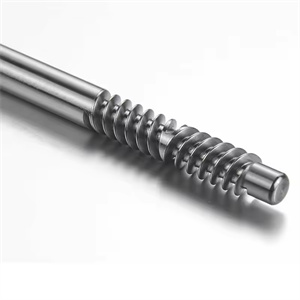Shafts are widely and crucially used in the transportation industry as important components that connect and drive various components of vehicles. They play an irreplaceable role in ensuring the performance, safety, and reliability of vehicles. Shafts, The axis is a key component in transportation that transmits power, torque, and rotational motion. They are usually made of high-strength materials and can withstand large loads and speeds, ensuring stable connections and efficient transmission between vehicle components. There are various types of Shafts, including transmission shafts, drive shafts, half shafts, etc., which are widely used in various fields such as automobiles, rail transit, aerospace, etc. The following are specific applications of Shafts in the transportation industry:
1. Automotive industry
a. Transmission system
Transmission shaft: In the automotive transmission system, the transmission shaft is responsible for transmitting engine power to the wheels. They are usually located at the bottom of the vehicle, connecting the transmission to the rear axle (or front axle) to ensure smooth power transmission to the wheels and propel the vehicle forward. The design and manufacturing of transmission shafts need to consider various factors such as vehicle weight, speed, torque, and road conditions to ensure their load-bearing capacity and transmission efficiency.
Drive shaft: In some vehicles, such as four-wheel drive models, the drive shaft is also responsible for transmitting power to all wheels, achieving all wheel drive. These drive shafts typically have stronger load-bearing capacity and more complex structures to cope with complex road conditions and driving needs.
b. Suspension and steering system
Shafts also play an important role in the suspension and steering systems of some vehicles. They may serve as control arms or steering knuckles, connecting the wheels to the body or frame, allowing the wheels to rotate freely and withstand various forces and vibrations during driving.
2. Rail transit
a. Power transmission
In rail transit vehicles, Shafts are also used to transmit power. They may be connected to the motor and wheels, or to the transmission devices between different carriages, ensuring that power can be smoothly transmitted to the entire train system.
b. Steering and suspension
Similar to automobiles, the steering and suspension systems of rail transit vehicles may also use Shafts to connect and support critical components. These Shafts need to withstand the enormous impact and vibration generated by the train during operation, while maintaining stable connections and precise motion control.
c. Drive shaft: transmits power from the transmission to the wheels, allowing the vehicle to move.
For example, in a front wheel drive car, the half shaft transfers power from the transmission to the front wheels.
Transmission shaft: In four-wheel drive or rear wheel drive vehicles, it connects the transmission and rear axle to transmit power.
The transmission shaft of large off-road vehicles needs to withstand large torque and complex road conditions.
Crankshaft: One of the core components of an engine, which converts the reciprocating motion of the piston into rotational motion.
The crankshaft of high-performance cars usually adopts more advanced manufacturing processes and materials to increase the engine speed and output power.
Camshaft: controls the opening and closing time of valves, affecting the intake and exhaust of the engine.
